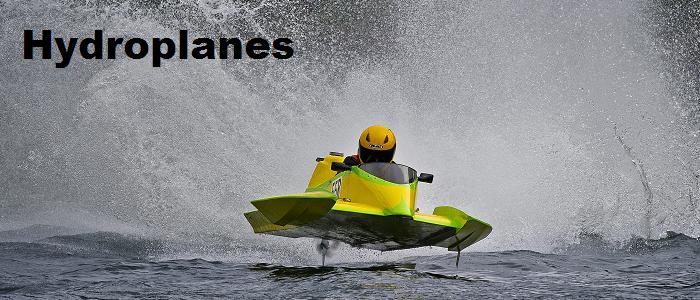
Hydroplanes are designed for optimum speed and ride on a cushion of air. They are driven in the kneeling position. A 3-point hydroplane relies on lift created by channeling air through a tunnel or air trap that runs down the middle and full length of the bottom of the boat. It also gets lift because of its overall airfoil shape.
As the boat’s speed increases it gets “on-plane” – it lifts up out of the water, thereby decreasing drag and allowing the boat to skip across the top of the water. On either side of the air trap, in the front area of the boat, are sponsons. Sponsons help the boat to plane off, provide stability when turning, and channel air into the air trap at high speeds. When the boat is on plane at high speed, it literally flies across the water. Only the back few inches of the bottom of the boat and the tips of the propeller blades are in the water. The bottom of the sponsons occasionally tap the water. This is where the “3-point” name comes from – 2 sponsons and the rear of the transom. The 3-point configuration provides stability.
The hydroplane has a turn fin mounted to the rear of the left sponson. Since all standard racecourses are ovals, and are run in a counter-clockwise direction, the turn fin on the inside of the turn ensures that the hydro “hangs on” through the turn. When going into a turn, the driver shifts their weight to the inside of the turn, setting the inside sponson and turn fin down, and allowing the boat to be turned. When coming out of the turn, the driver shifts their weight back to the center and back of the cockpit, balancing the boat and allowing it to “fly” again.